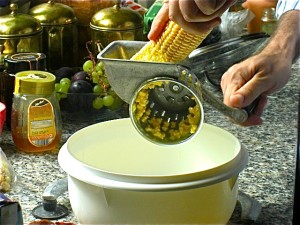This visit was actually for a good-bye beer. My fairly longtime English friend (we have been friends for about five years, which is long in expat circles) has since then moved to Munich, one of the cities claiming to be the Bierhauptstadt (beer capital).

With Jeannette from Nottingham/UK
I hope to get to see Jeannette for a beer in Munich before she moves on again!
By the way, here is something I learned today:
*Take a nonalcoholic Weißbier, add Zitronenlimonade ( carbonated soft drink, especially sweet lemon-flavored drinks) and you have a Russ’n (coll. for Russen = Russian)
Wonder what a combination of an alcoholic Weißbier with Limonade would produce, a Tartar maybe?
Munich is famous for its Weizenbier (German), but in the southern regions of Germany and Austria, only ask for a Weissbier or you will get funny looks.






